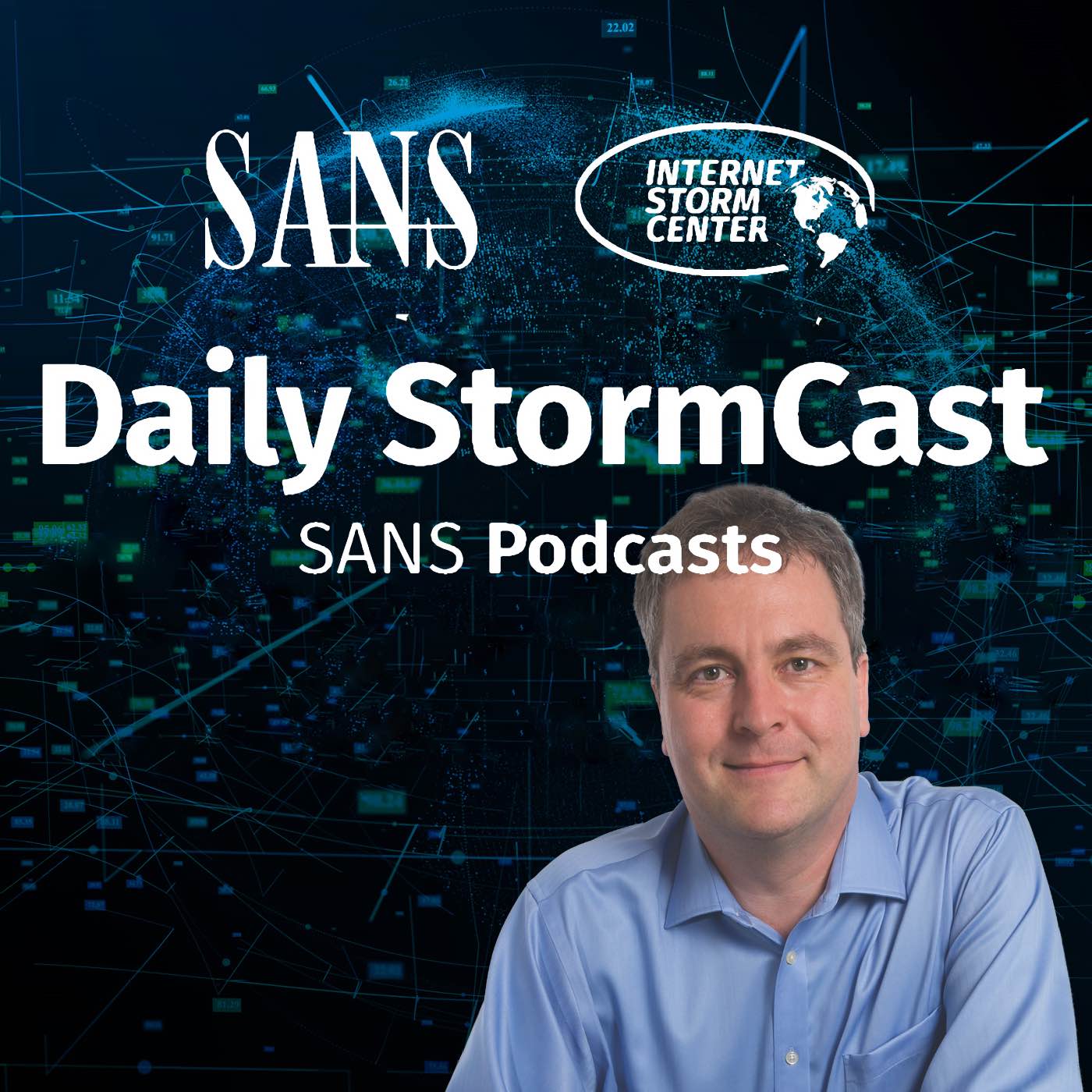Handler on Duty: Didier Stevens
Threat Level: green
Podcast Detail
SANS Stormcast Tuesday, November 11th, 2025: 3CX Related Scans; Watchguard Default Password;
If you are not able to play the podcast using the player below: Use this direct link to the audio file: https://traffic.libsyn.com/securitypodcast/9694.mp3
My Next Class
| Application Security: Securing Web Apps, APIs, and Microservices | Orlando | Mar 29th - Apr 3rd 2026 |
| Network Monitoring and Threat Detection In-Depth | Amsterdam | Apr 20th - Apr 25th 2026 |
It isn’t always defaults: Scans for 3CX Usernames
Our honeypots detected scans for usernames that may be related to 3CX business phone systems
https://isc.sans.edu/diary/It%20isn%27t%20always%20defaults%3A%20Scans%20for%203CX%20usernames/32464
Watchguard Default Password Controversy
A CVE number was assigned to a default password commonly used in Watchguard products. This was a documented username and password that was recently removed in a firmware upgrade.
https://github.com/cyberbyte000/CVE-2025-59396/blob/main/CVE-2025-59396.txt
https://nvd.nist.gov/vuln/detail/CVE-2025-59396
JavaScript expr-eval Vulnerability
The JavaScript expr-eval library was vulnerable to a code execution issue.
https://www.kb.cert.org/vuls/id/263614
Discussion
New Discussions closed for all Podcasts older than two(2) weeks
Please send your comments to our Contact Form
| Application Security: Securing Web Apps, APIs, and Microservices | Orlando | Mar 29th - Apr 3rd 2026 |
| Network Monitoring and Threat Detection In-Depth | Amsterdam | Apr 20th - Apr 25th 2026 |
| Application Security: Securing Web Apps, APIs, and Microservices | San Diego | May 11th - May 16th 2026 |
| Network Monitoring and Threat Detection In-Depth | Online | Arabian Standard Time | Jun 20th - Jun 25th 2026 |
| Network Monitoring and Threat Detection In-Depth | Riyadh | Jun 20th - Jun 25th 2026 |
| Application Security: Securing Web Apps, APIs, and Microservices | Washington | Jul 13th - Jul 18th 2026 |
| Application Security: Securing Web Apps, APIs, and Microservices | Las Vegas | Sep 21st - Sep 26th 2026 |
Podcast Transcript
Hello and welcome to the Tuesday, November 11th, 2025 edition of the SANS Internet Storm Center's Stormcast. My name is Johannes Ullrich, recording today from Jacksonville, Florida. And this episode is brought to you by the SANS.edu Master's Degree Program in Information Security Engineering. Today's diary is about an odd username that I spotted in our honeypod logs. The username is ftp underscore 3CX. Now, the 3CX part likely refers to the maker of business phone systems 3CX. A couple of years ago, they sort of went through the news for being the victim of a big supply chain attack. But what we are seeing here is likely unrelated. I did, of course, do a quick search trying to figure out is this some kind of default username, maybe going with a default password. Doesn't look like it. And actually 3CX, their product does not really come with an FTP server. And our honeypod actually is looking for Telnet and SSH credentials. So we are actually not emulating FTP. I believe what's happening here is that if you're using these business phone systems from 3CX, one of the options you have to create backups is FTP. And they're talking to documentation about setting up an FTP server that will receive these backups. So again, the product itself doesn't come with an FTP server. It's something that you're setting up separately. And they're offering a couple popular sort of FTP server options here and walking you through how to set them up correctly. But there are a couple issues here. First of all, that the username, well, people are likely going to use a username related to the product. There is a comment here to the diary by Stephen, who says, well, it's just human nature to use names like Stephen is using, for example, Veeam, like Veeamuser, Veeambackup and such. If you're using Veeam here for 3CX, why not using FTP underscore 3CX? The documentation actually uses 3CX FTP user. So that's a variation of that particular username. Similar, the passwords that we are seeing being attempted for this user are also sort of 3CX related, likely preying on users that are essentially a little bit lazy in picking strong passwords. So this is not a case where a vendor would pick this weak password for you. This is users making that mistake. Very plausible explanation here that this is just human nature. What's a little bit bothering me or interesting to me is how do attackers pick those particular names? And I suspect that maybe they found usernames and passwords like this in other breaches that they came across and figured, hey, you know, we breached a couple of small business networks and such that ran the small business voice or IP system. And they all use the same usernames and passwords. Let's see, you know, who else does that? That's, I think, sort of where some of this may be coming from. Be careful with your username and passwords. Pick at least a random password. And actually, for a case like this, no user will actually ever really type these in. These are stored in some configuration files. It's not that wrong, really, to just use a random username as well here. And also make sure that, you know, yes, FTP, not a great protocol. But if you're using FTP for backups, that this user then does not have access via SSH and Telnet. So that way, if someone spots that password on the network, they're not able to actually log in and get a shell easily with that password. And we've got an interesting issue here around default usernames and passwords with WatchGuard Firebox devices. Now, the issue here is a default password for SSH. SSH is listening on port 4118. So not on port 22. And the default credentials are admin as username and password read -write. This was apparently assigned a CVE number 2025 -59396. However, WatchGuard does actually mention this configuration in their manual and suggests administrators to change it. Don't know. I like that. Don't know if I think this should be assigned a CVE number. NVD apparently doesn't think this is supposed to receive a CVE number because they ultimately rejected this particular CVE. Interesting converse around this. But in my opinion, there shouldn't be a default password select. Apparently, newer versions of WatchGuard Firebox firewalls do not contain or use this particular default set of credentials. So there is a patch for a vulnerability that never existed in some ways. But yes, definitely, if you're running WatchGuard, be aware of this issue and double check that your administrators changed this password or at least disabled access to the account. And then we got an interesting, vulnerable JavaScript library for a change, not an obviously malicious one. This is expr -eval. expr-eval is intended to be used to evaluate math expressions. Now, you could use the JavaScript eval function, but everybody knows eval is just one letter away from evil and is a function that should be avoided at all costs in any language, not just JavaScript. Because if you are executing strings, there's always a chance that some malicious command slips through. Well, that's what expr-eval is trying to avoid. They're trying to constrain the eval function to just mathematical operations where this is sometimes quite useful. But apparently, well, they didn't get it quite right. And this update now is fixing an issue where someone could slip through some commands. So definitely keep it updated. And if you're doing NPM, NPM will help you actually figure out if you are running this particular libraries on NPM audit. It should be able to detect a vulnerability and then also offer the ability to patch it. Well, and this is it for today. So thanks again for listening. Thanks for liking and subscribing to this podcast. As always, special thanks for leaving any good comments with your favorite podcast platform. Then that's it for today and talk to you again tomorrow. Bye. Bye.











